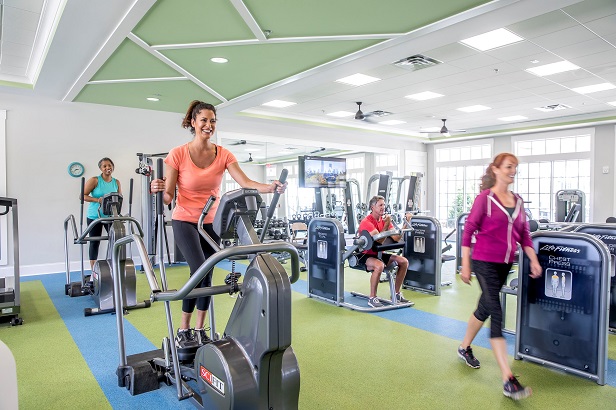Before the pandemic hit, many retail landlords saw gyms as a lifeline.
“A lot of soft goods retailers that were big anchors of shopping centers have closed their doors as they’ve been impacted by E-commerce,” says Nick Banks, principal, managing director and global leader of Avison Young’s retail affinity group. “Pier One is an example. As they were closing most of their locations, gyms were backfilling those spaces that were left unoccupied.”
The gyms didn’t just fill space, they also brought energy, visibility and foot traffic to shopping centers, even if they tied up parking space.
“Even though there were still some of those parking concerns, it was better than having a big vacant space that was just empty, and nobody knew what we were going to do with it,” Banks says. “So before COVID, gyms were one of the bright spots of retail that we’re occupying big chunks of space. So it was a real success story.”
Then COVID-19 hit and gyms closed. Even now that they’re reopening, usage isn’t close to where it was. “With COVID, health clubs are just battered because of the nature of their business with shared equipment and people exercising in proximity to other people,” Banks says. “They’ve suffered as much as restaurants.”
The data supports that. As of the week of June 29th, foot traffic in the fitness industry was down 49.6 percent, which was an improvement from being down 52.1 percent the week before, according to Placer.ai, the foot traffic analytics firm.
As they’ve hemorrhaged revenue, some gyms, including Gold’s Gym International and 24-Hour Fitness Worldwide, filed bankruptcy, which forced hundreds of health clubs to close completely.
While there is pain in the fitness club sector now, Banks sees an opportunity for the remaining chains to grow their business after COVID-119.
“I think the ones that survive will get stronger and bigger, but I don’t think health and fitness is going away as a category,” Banks says. “There is a social aspect of going to a gym. There are things that you can do there that you cannot replicate at home. Even if you tried to work out at home, you can’t replicate the energy and the social aspect of working out in a place with other people.”
The continued importance of gyms should be good news to other retailers.
“I think you could go through any category of retail, and there are going to be clear winners and losers that emerge from this,” Banks says. “I think there has been a continual trend towards health and fitness and gyms and other [retail] businesses have benefited from that. I don’t see that trend diminishing.”
If anything, Banks thinks COVID-19 will show people the importance of being healthy. “With COVID and what’s going on in the world right now, there is even more of an emphasis on health and wellness,” Banks says. “Health clubs fit into that dialogue.”
